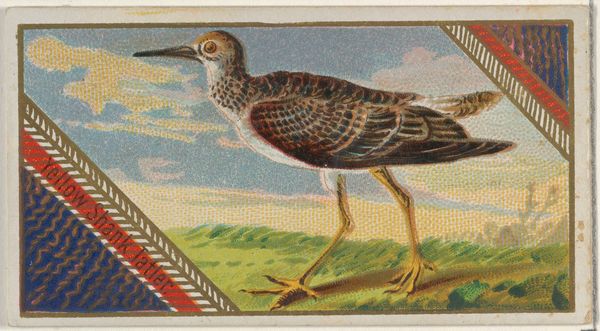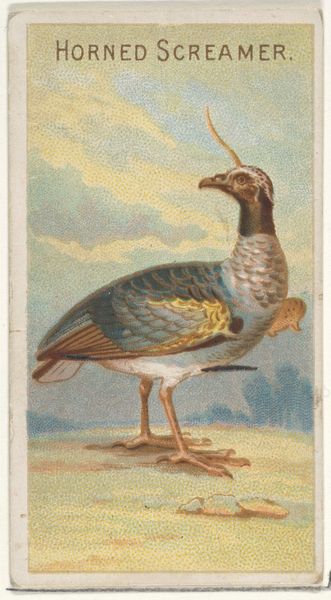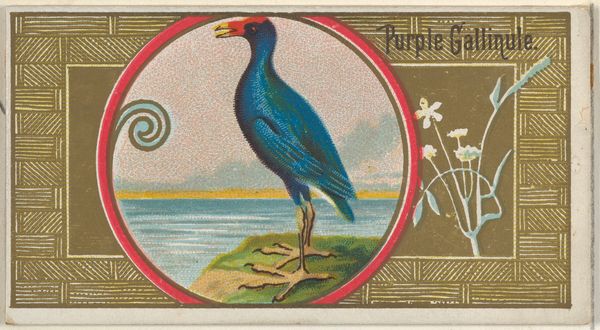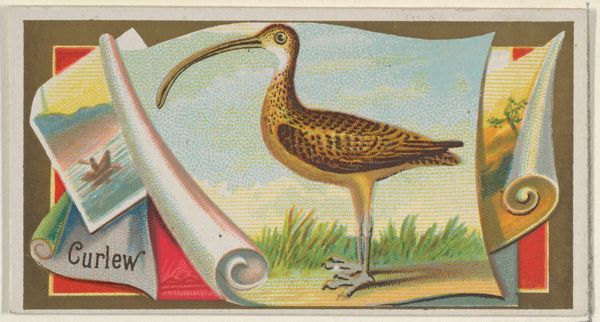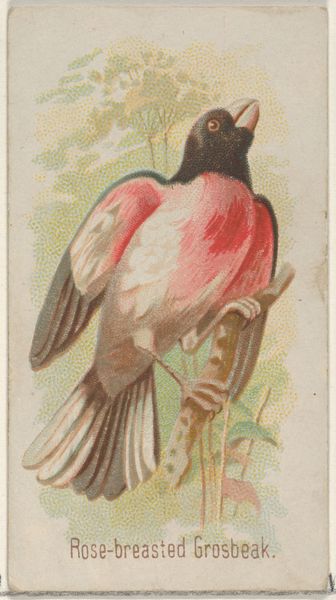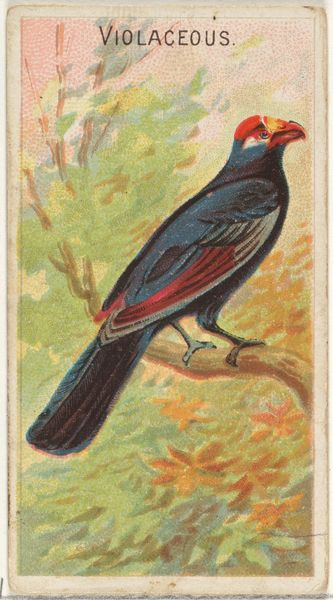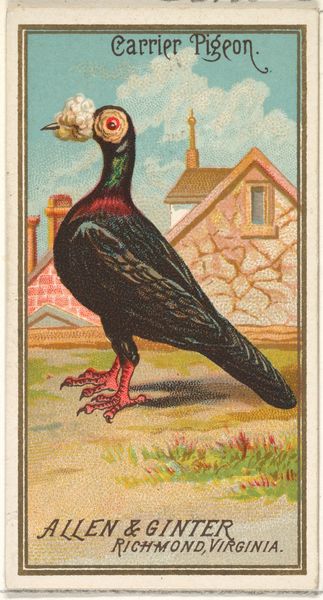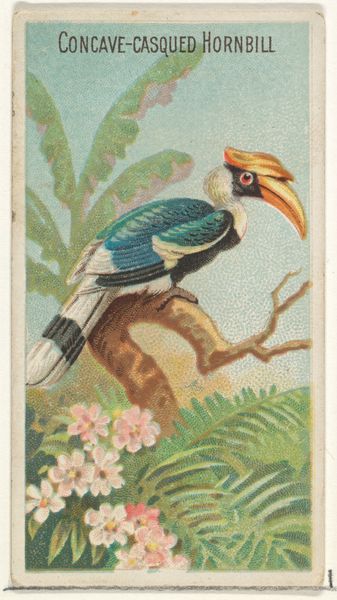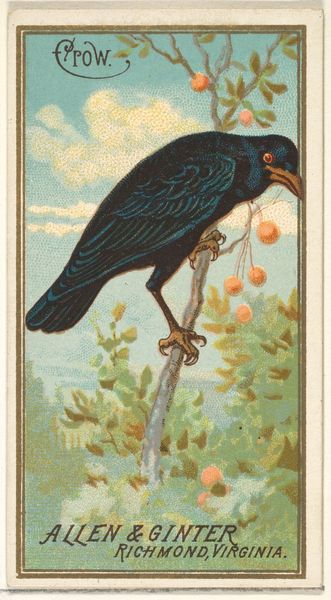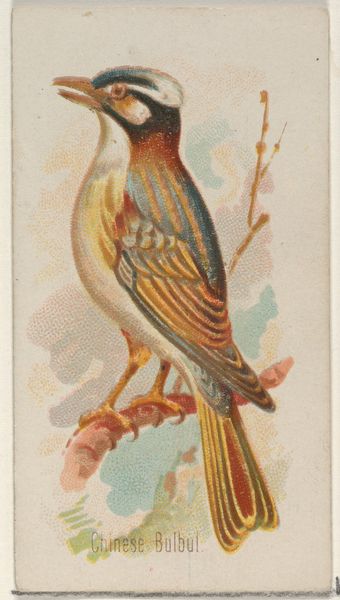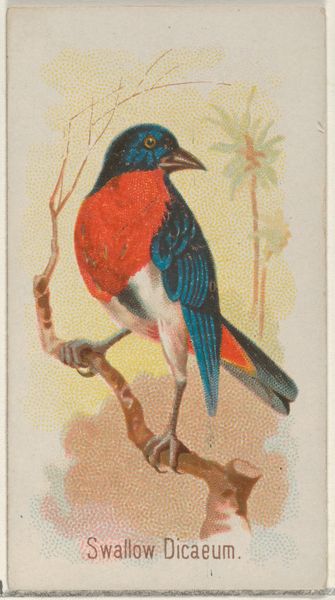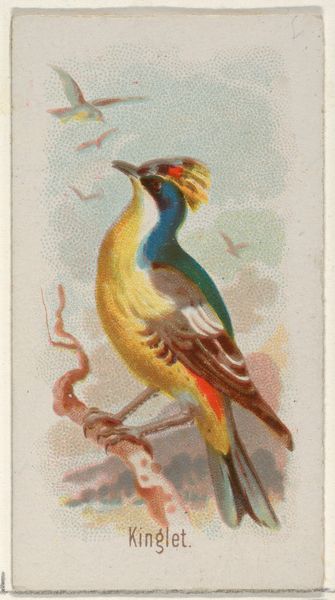
California Partridge, from the Game Birds series (N13) for Allen & Ginter Cigarettes Brands 1889
0:00
0:00
drawing, print
#
drawing
#
egg art
# print
#
bird
#
handmade artwork painting
#
oil painting
#
tile art
#
fluid art
#
acrylic on canvas
#
coffee painting
#
naive art
#
watercolour illustration
#
watercolor
Dimensions: Sheet: 1 1/2 x 2 3/4 in. (3.8 x 7 cm)
Copyright: Public Domain
Editor: Here we have "California Partridge, from the Game Birds series (N13) for Allen & Ginter Cigarettes Brands," a print from 1889. The colours are quite striking, but there’s also a strange kind of formality to it. What's your take on this piece? Curator: This print, while seemingly simple, offers a glimpse into the intertwined histories of consumerism, wildlife, and cultural identity. Allen & Ginter's use of game birds for cigarette cards reflects a late 19th-century fascination with natural history and hunting culture, largely exclusive to wealthy white men. But who decides which birds are “game” and worthy of depiction, and which are erased? What power dynamics are at play? Editor: That’s a great point about power dynamics. I hadn’t really considered who this imagery was targeted towards. Curator: These cards were essentially collectibles that promoted a particular lifestyle. The "California Partridge," presented within an ornate frame, becomes both a specimen and a symbol. How does that contrast with our current understanding of ecology and conservation, especially regarding vulnerable species native to California? And whose stories get prioritised in narratives about the American West? Editor: So, this image is more than just a picture of a bird. It's tied to consumer culture and perhaps even a skewed view of the natural world and colonial masculinity? Curator: Exactly. By critically examining such seemingly innocuous images, we can unravel deeper cultural narratives around gender, class, and environmental exploitation that continue to resonate today. It's a reminder that art, even in commercial form, is never neutral; it actively shapes our understanding of the world and our place within it. Editor: Wow, I’ll definitely look at these cards differently now. It’s fascinating how one image can spark such important questions! Curator: Precisely! The beauty of art lies in its ability to reflect and refract the complexities of human experience and encourage meaningful change.
Comments
No comments
Be the first to comment and join the conversation on the ultimate creative platform.
